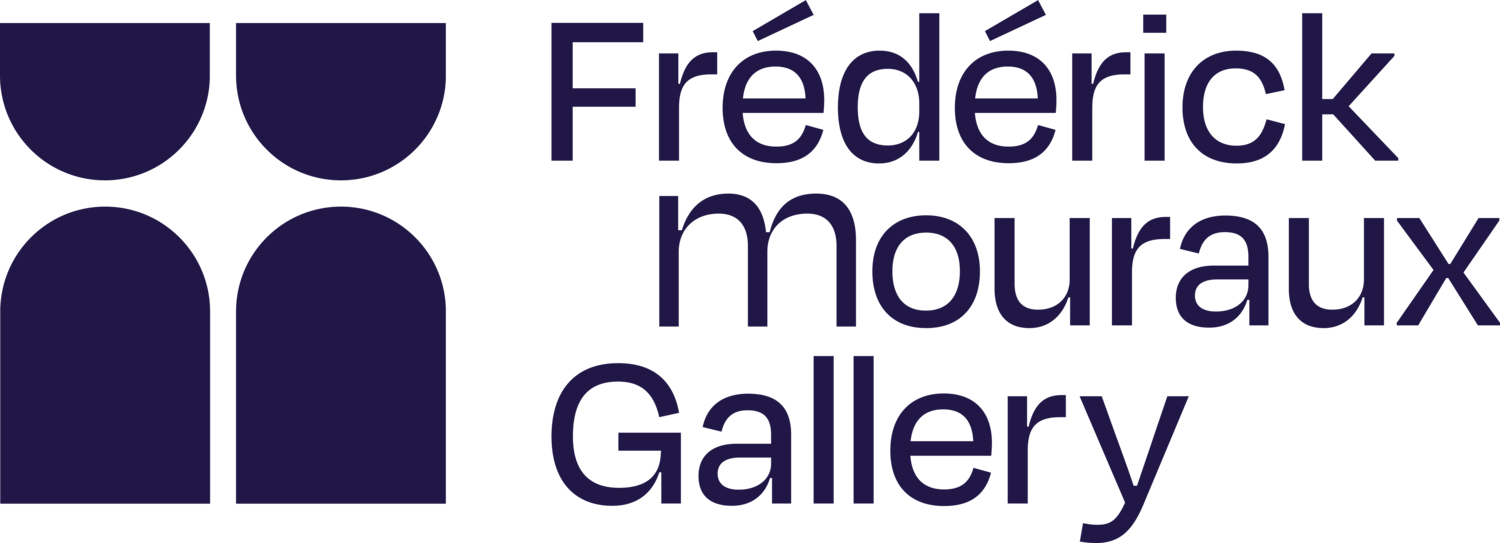For A Contextual Art
16 January - 26 February 2022
Frédérick Mouraux Gallery is honoured to present the works of the international artists Lucy + Jorge ORTA.
Lucy + Jorge Orta’s collaborative visual arts practice employs a diversity of media including drawing, sculpture and performance to realize major bodies of work that address key social and ecological challenges.
THE ROSARIO PERIOD 1972-1984
For a Contextual Art is the first solo exhibition of Lucy + Jorge Orta in the established Brussels gallery. The work on show provides insight into concepts that act as keystones of their collaborative practice. Marked by the turbulent social and political landscape during the Argentine military regime from 1972-1984, Jorge’s formative years of practice underwent a period of intense questioning. As well as exploring the new visual languages of performance, video-art, mail-art and tactile poetry, a new genre of painting served as a medium to counteract mounting injustices and to affirm a Latin American identity. Divided into two, the first part of the exhibition presents four different series of coded paintings that evolved out of this particular context, Geometría Contextual 1972, Trazado De Indias and Triangular AAA both 1973, and Derrame from 1997. The second part includes editioned works –vitrines, tactile poems, reliquaries– that further the artists’ preoccupation with widening access to and reaching new audiences, through poetic objects that can be used on a daily basis.
PART 1 – Painted works from the Rosario period 1972-1984
TRAZADO DE INDIAS: PARCELAS DOMINANTES 1973-1983
Since the discovery of the Americas, the trazado de Indias has structured urban planning of new towns and cities across the Spanish empire, this orthogonal layout is called a ‘manzana’. A manzana is equivalent to one-hectare and it regulates land division. The high concentration of latifundia was the origin of the social movements against the entire system of land accumulation. The revolutionary organisations sought land-ownership reform and social justice, but the methods practiced by the guerilla-army, with abductions and killings, led to the creation of the Argentina Anticommunist Alliance: the ‘Triple A’. The paintings of Piet Mondrian, with their different sized rectangles are the source of inspiration for Orta’s work Parcelas Dominantes, which represent the unequal division of land.
TRIANGULAR AAA 1973-1976
From 1973 onwards, Argentina is sucked into a spiral of violence. Marked, on the one hand, by the activities of the Montoneros guerrilla and the ERP of Maoist-Trotskiste leanings; and on the other, by state terrorism and the activities of the Triple A death squadron directed by the minister José López Rega, with the police and armed forces. From 1975, Isabel Perón’s government ordered the Independence Operation, with “decrees to annihilate subversion”, which sparked a state of emergency across the entire country: the ‘dirty-war’ had already begun with the disappearance of 900 people even before the military putsch. From 1976, the junta organised the systematic and massive repression of opponents, outside any legal framework, employing methods of mass-disappearances and the ‘death flights’.
DERRAME [ACCIDENT] 1977
The word ‘derrame’ in Spanish is charged with multiply significations: a leak (escape, loss), a spill over (waste), an outpouring (effusion), or a stroke (cerebral seizure, paint gesture). It is all of these meanings that make up these intense paintings –at the origin of the abstract gesture is an accidental moment that produces the varying states of pigment fusion – the accident being the essential composition and subject matter of the painting.
The Derrame series dates back to 1977, a traumatic period of social and political unrest in Argentina; the military Junta had toppled the Perón government a year earlier, and was marked by many among other things, a total censorship of culture and the first demonstration by the mothers of the disappeared children, in the Plaza de Mayo, Buenos Aires. Working in his home-town Rosario (1972-1984), Orta’s practice underwent an intense period of questioning. Parallel to his collective work and performances, painting became an emotional act of frustration, and even revolt. For Orta, Derrame epitomises a society going out of control.
GEOMETRÍA CONTEXTUAL 1972
The 1970’s in Argentina was marked by a growing interest in the Latin American reality, sparked by the mythical voyage of Che Guevara who discovered vast social inequalities. The rise in the student movements reinforced the sentiment of belonging to a Latin American identity, not one forged by the European immigrants but one built on a social and geographical reality that was being discovered. Jorge Orta felt part of this new social awakening and his response was the series of paintings Geometría Contextual. The ideological positioning of these works opposes the dominant North American and European culture, with their geometric composition partially drawn from indigenous motifs found in vernacular architecture, ceramics and textile designs across Latin America.
Part 2: Poems and windows, multiple works (limited editions)
Poems
Emerging from the forms of expression such as Mail Art, Tactile Poetry and Sound Art that were prevalent throughout South America throughout 1970’s, Jorge Orta created a series of tactile poems that he envisaged as “metaphorical fragments of lived-experience”. Taking the form of vitrines, boxes or valises that contain found or hand-made objects these meditative artworks are designed to be touched, providing that the subject is in the right state of mind. They are accompanied with a set of simple instructions :
Place the box on a low table next to a comfortable armchair.
Recline, with you head against a soft cushion and find a comfortable position for your legs.
Let your left arm relax and place your hand inside the box.
Touch, stroke, caress, feel the volume, contours and temperature of the objects.
Once in a state of total relaxation, let the images of life’s experiences invade your thoughts.









